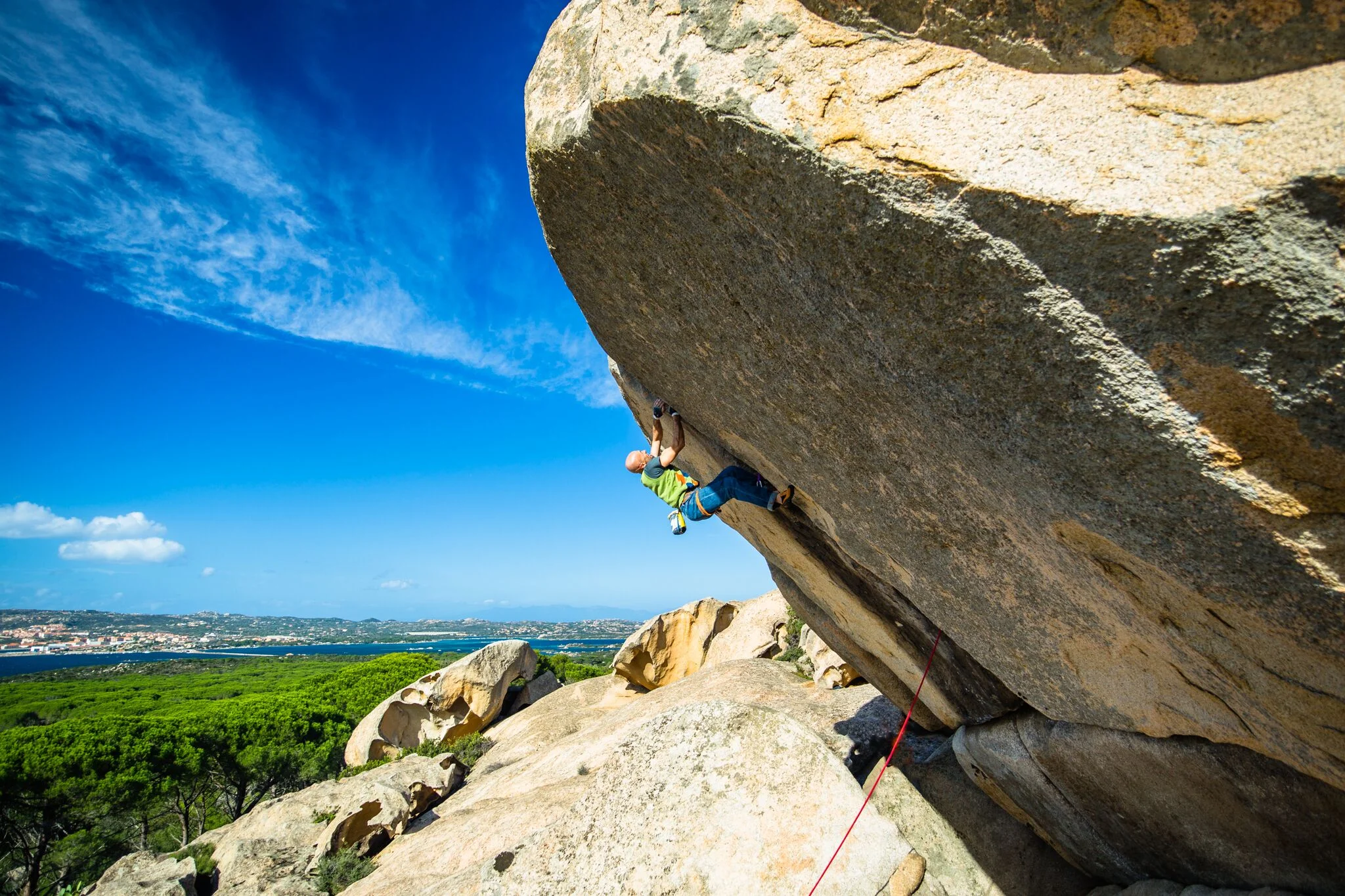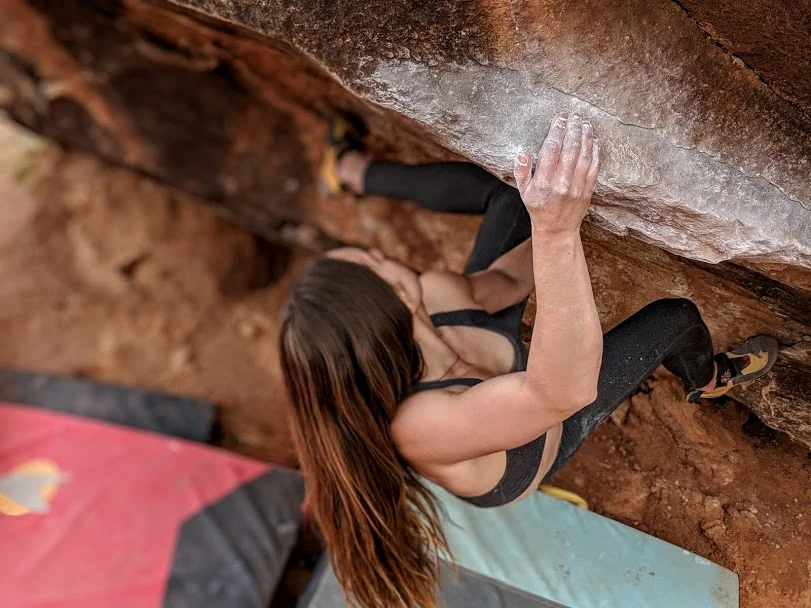How to Take Great Climbing Photos - Best Tips from Pros (Part 2)
5 more of the world’s best climbing photographers tell us what they do to make a climbing photo that’s truly different!
So hopefully you’ve already read the first photography article. There we learnt about the foundations of what makes an amazing climbing photo.
But I’m sure you’re very aware that not all climbing photos are the same. In fact, many of the best ones are vastly different.
Well, lets try address this! What are photographers doing to capture the intimidation of the route or the emotion of the climber?
What is it that turns your climbing photo from something amazing, to something truly special?
5 more of the world’s best photographers share their secrets!
Find something that captures your imagination as a climber.
During my career I've become Italian boulder champion, won the Italian bouldering cup and took part to many international events and competitions. But it's on rock where I spent most of my time. Alongside my passion for climbing I discovered photography which has always been my faithful partner during my travels.
"First of all: look for a feature or subject, find something that captures your imagination as a climber. It can be the shape of a boulder, a hold, an aesthetic movement, or simply the location surrounding a climb. Every picture should have "a subject", and your job is to let other people see how cool that subject actually is.
Now that you've found your subject, you have to find the right spot. What is the best angle to capture the image you just saw in your mind?
Move! Change focal length, try different options: get close to the action if you're interested in movements, facial expressions or rock features. Step back and go wider if you want to show the beauty of a climb and the context surrounding it.
Last but not least: the light. If you happen to be at the same location for several days, observe how the light changes and the sun's trajectory (an app might help for this). Don't be impatient, plan your shot in advance and be ready to get back there for the perfect light. You'll be rewarded!"
Seeing the whites of a climbers eye's connects you to the photo -
Photographer/editor of The Circuit World Cup and Performance Climbing magazine. Official IFSC Photographer
"Like any artistic pursuit, the first rule of climbing photography is that rules are made to be broken.
However, for best results, knowing the standard rules of lighting and composition is important. In climbing, composition can be more important than lighting but, when shooting a climber in action, a lot of the time we need the light to work for us at the moment of action.
In other forms of photography like portraiture and landscape we can control the light, or at least time the photograph for the optimum lighting. In climbing, if the climber is warm and ready for an attempt it goes without saying that asking them to wait a couple of hours for golden hour isn’t an option.
Sure a photographer can pose climbers and get perfect light, but if you want actual send photos it’s important to work to the climbers schedule.
So, if natural light isn’t an option, what about strobes? Strobes can be used to great effect but 99.995% of climbing photos shot with artificial light look faked. Sure, a lot of people like them but to me less is more.
You still want the climber to fit the environment after all.
When shooting outside I try to avoid lighting the subject unless they're in a cave or there is hard light coming through trees which can give crazy, frustrating issues with shadows cast by foliage.
In climbing photography I always like to shoot medium tight, but that’s just a personal style thing. I also like to ensure there is space for the climber to move into.
Having come from a background shooting motorsport I’ve learnt to give the subject space to move into. After all if you shoot tight but cut the photo right above the hand you lose perspective of what they’re going for.
I mean it could be the world’s biggest jug!
Lastly for me I like face. Seeing the whites of a climbers eye's, the exertion on their face, it connects you to the photo. It is something I’m always waiting for when shooting. It’s worth understanding a climbers try hard face as well. If they push their tongue in their cheek while climbing (blowjob face) you want to be on the other side!
A funny face can be entertaining, but it’s a surefire way to shrink your client list if you publish it!"
For non-climbers, it isn't important to show crux, it’s important to get nice shots
I'm the only female adventure photographer in Denmark. I'm specialized in adventure photography, editorial, corporate, commercial photography & motion picture. For two years in a row I've won the award for Best Danish Movie at Nordic Adventure Film Festival (2016 & 2017). I have held photography workshops in Denmark, Norway, Iceland, Marocco, Uganda and Japan.
"It's a warm August day on Bornholm, Denmark's only place with real rock climbing.
I’m rappelling halfway down the wall and I tell the climber about the pictures we’re about to shoot - what kind of shots I am going for. I tell them that they only have to climb a certain part of the route, maybe 3 or 4 times, and then we choose another part of the route.
I believe it’s important that they know what I think - Information is key.
I'm going to photograph a young climber in a granite quarry and the pictures are going to be published in a series of articles about outdoor activities around Denmark.
In an article about climbing, for non-climbers, it isn't important to show crux etc. It's just important to get some nice shots.
I shoot both in landscape and portrait format- portrait, as a possible way to get cover for the magazine."
Knowing the difference between a beautiful moment and a beautiful picture
Ryu Voelkel - Sports photographer based in Berlin, Germany. Started to get involved with climbing two years ago by accident. Too scared to shoot outside climbing as he cannot trust a single rope to hold him and his camera.
"To me, sport is a competitive thing. It's not man against nature, it's man against man or man against himself and you either win or lose. You get happy or you get upset.
The action to me is second hand, at the end of the day it has to be the winning or losing that takes precedence. This can depend on the person however, some people are much better at showing their emotion than others.
But that moment of emotion is really really what I want to capture. Now that I've been to a few events I can understand how it works, who would do it and which point in the climb it occurs.
The main thing is putting myself in the correct place to shoot. If I know the where, the when and the how then I can produce the what and the what for me is the actual photography. It’s the type of lens, the distance, the angle, the composition, the light. I put it all together and then I know I'm gonna shoot it like this.
I have in my head how things will look but it doesn't happen like that. You cannot say for certain something is gonna happen. But part of the skill is in learning to be more certain that something is gonna happen. You've got to have the ability to predict maybe 1 second into the future if you're gonna capture that moment.
Something people often get wrong is knowing the difference between a beautiful moment and a beautiful picture. You can capture the moment a climber wins a world cup or finishes their hardest project but if it's a shit picture, it's still a shit picture. People often think if they have a great moment then they have a great photograph but those things have nothing to do with each other.
Fixing this requires an education. People should have the chance to see great photography but that's not what you get on social media.
I put the burden of this on the creators, you've got to be your own worst critic. I actually run a podcast where listeners submit photos and we destroy them. But importantly, we tell you how to do it again and how to do it better.
At a competition I'll take maybe 3000 photos and I'm happy if I only have one good one. Who gives a shit if you've got thousands of mediocre photos?
Coming up with your own style is a very difficult thing to address. How to do it is not an easy thing to answer.
You think about how you want to shoot it. There's no rule, you find out what's beautiful and what's not. It should be done the way you want to do it.
But I would try to avoid doing the same thing twice. If know I can shoot something well and that's all I do then I'm still in my comfort zone - I'm not learning.
In outdoor photography I want to see the frustration, I want to see it in their faces. In climbing there is one success for every ninety nine failures and those failures deserve their time. I want to see how different I can make it. More injuries, more suffering, more blood..."
A polite photographer works as a waiter
"Learn about the Golden Ratio or Golden Mean, which is similar to the Rule of Thirds but a little more refined.
There are many articles and tutorials on the subject online. It applies to all the visual arts, whether you are taking photos, painting, drawing or shooting video.
Although it is not fool-proof or always going to work it will get you thinking about composition, and making considered decisions, which eventually become instinctive.
Try more than one angle when composing a picture, in fact always test three or more angles even if you are sure the first one you think of is right (this is often true, but you'll be happy you tried a few more when you improve on your original angle).
Also try any angles, lighting techniques, or fields of view that are outside of your safety zone. Don't be afraid to ask people to do things for you or to get out of your field of view; as a wise friend once said: A polite photographer works as a waiter. You may not want to make a career out of photography but this mindset will improve your pictures.
Take inspiration where you find it, in paintings, newspapers, other photographers, or whenever you see something that grabs your attention. And make a note of it. You will forget otherwise.
Always try something you think may be interesting, but are unsure of. If it fails, you can throw it away. If it succeeds you've learned something new that you can keep using.
As with climbing, make sure you're having fun, and not making a chore of it."
Looking for the next adventure to use all these tips?
Access hundreds of high quality topos including Fontainebleau, Rocklands, Siurana, Céüse, Magic Wood and much more with 27 Crags .premium subscription.
Text by Danaan Markey
27 Crags topos are made by local climbing area developers and enthusiasts. From the .premium subscriptions 50% of the income will go straight to the topo authors who are doing extremely important job in developing the climbing areas.
Interested in making topos? Don't hesitate to send us an email: tim(at)27crags(dot)com
Follow us on social media:



















